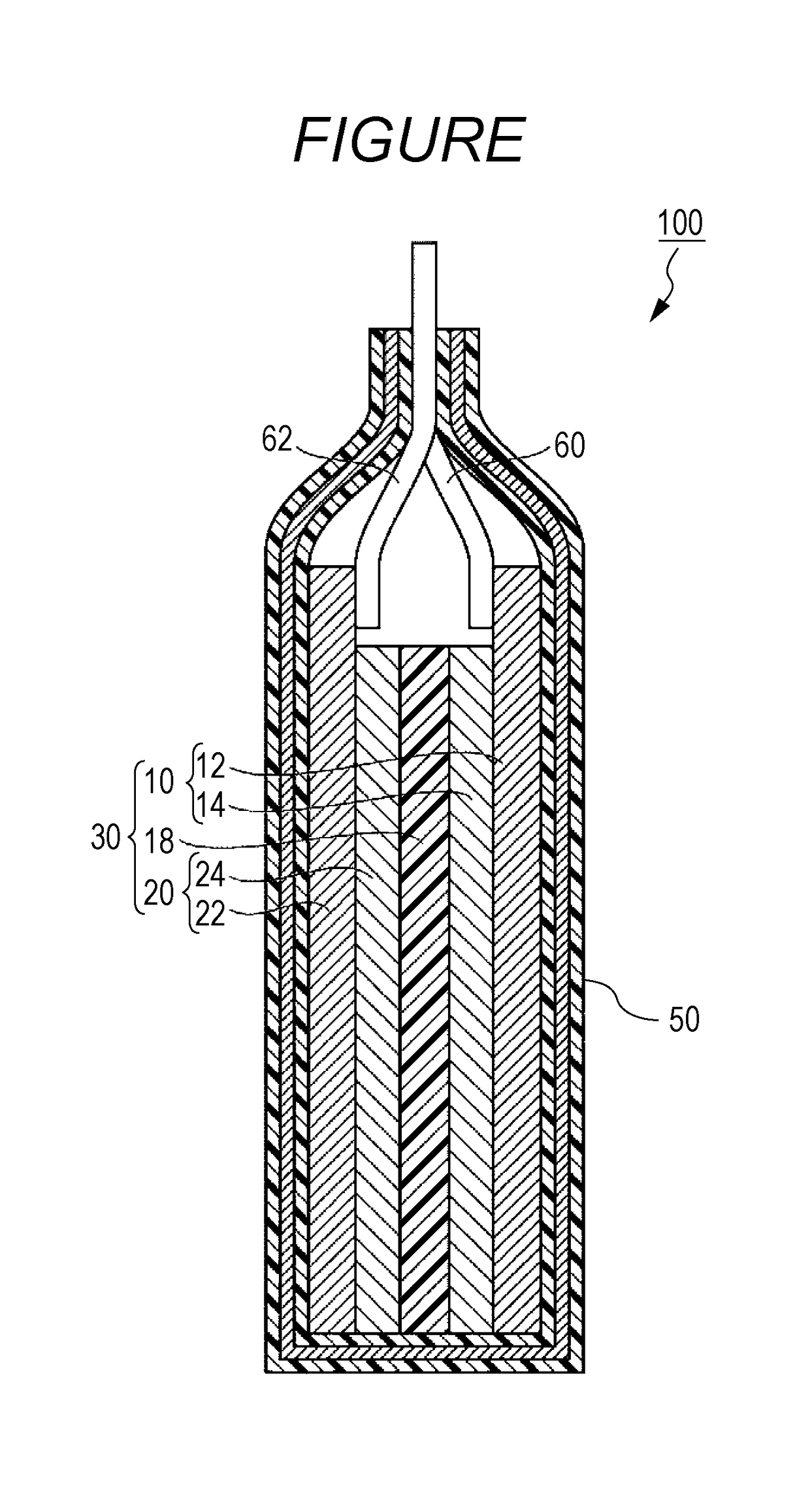Nonaqueous electrolytic solution and nonaqueous electrolytic solution battery using the same
a technology of nonaqueous electrolysis and electrolysis solution, which is applied in the direction of batteries, cell components, electrochemical generators, etc., can solve the problem of difficult to achieve the requirements of single solven
- Summary
- Abstract
- Description
- Claims
- Application Information
AI Technical Summary
Benefits of technology
Problems solved by technology
Method used
Image
Examples
example 1
Fabrication of Positive Electrode
[0053]A slurry for forming the positive electrode active material layer was prepared by dispersing 85 parts by mass of Li(Ni0.85Co0.10Al0.05)O2, 5 parts by mass of carbon black, and 10 parts by mass of PVDF in N-methyl-2-pyrrolidone (NMP). The slurry was applied to a surface of an aluminum metal foil with a thickness of 20 μm in such a way that the applied amount of the positive electrode active material was 9.0 mg / cm2. The aluminum metal foil with the slurry applied thereon was dried at 100° C. In this way, the positive electrode active material layer was formed. Thereafter, the positive electrode active material layer was pressed and molded using a roller press, whereby the positive electrode was fabricated.
Fabrication of Negative Electrode
[0054]A slurry for forming the negative electrode active material layer was prepared by dispersing 90 parts by mass of natural graphite, 5 parts by mass of carbon black, and 5 parts by mass of PVDF in N-methyl-2-...
examples 2 to 6
[0060]The lithium ion secondary batteries for evaluation in examples 2 to 6 were fabricated in the same way as in example 1, with the exception that the added amount of Group 5 element used during the fabrication of the electrolytic solution was changed as shown in Table 1.
examples 7 to 13
[0061]The lithium ion secondary batteries for evaluation in examples 7 to 13 were fabricated in the same way as in example 1, with the exception that the additive used and the added amount thereof during the fabrication of the electrolytic solution were changed as shown in Table 1, wherein Li2PO3F is lithium monofluorophosphate.
PUM
| Property | Measurement | Unit |
|---|---|---|
| thickness | aaaaa | aaaaa |
| charge rate | aaaaa | aaaaa |
| voltage | aaaaa | aaaaa |
Abstract
Description
Claims
Application Information
 Login to View More
Login to View More - R&D
- Intellectual Property
- Life Sciences
- Materials
- Tech Scout
- Unparalleled Data Quality
- Higher Quality Content
- 60% Fewer Hallucinations
Browse by: Latest US Patents, China's latest patents, Technical Efficacy Thesaurus, Application Domain, Technology Topic, Popular Technical Reports.
© 2025 PatSnap. All rights reserved.Legal|Privacy policy|Modern Slavery Act Transparency Statement|Sitemap|About US| Contact US: help@patsnap.com


